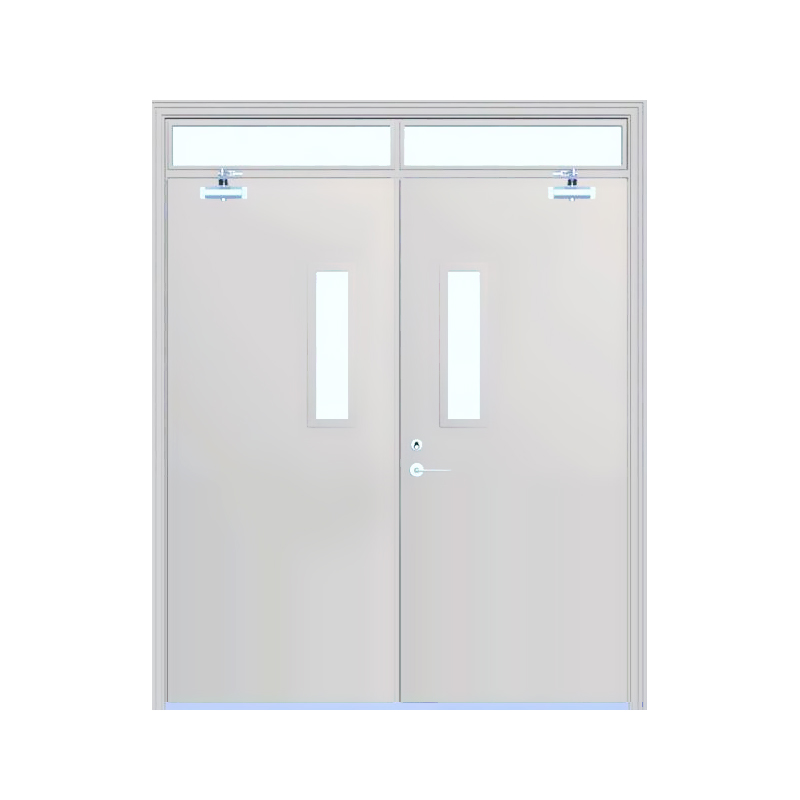

Cleanroom door surfaces are specifically designed to be […]
Cleanroom door surfaces are specifically designed to be smooth and free of crevices to prevent contamination accumulation. This is a crucial aspect of cleanroom design to maintain the stringent cleanliness standards required. Here’s how this is achieved and why it is important:
Design Features to Prevent Contamination Accumulation
1. Smooth Surfaces
Material Choice: Cleanroom doors are made from materials such as stainless steel, high-pressure laminate (HPL), or smooth-coated metals and plastics. These materials are selected for their ability to be finished to a very smooth surface.
Surface Finishing: The surfaces are often polished or treated to create a smooth, non-porous finish. This reduces the likelihood of particles adhering to the door and makes cleaning easier.
2. Crevice-Free Construction
Seamless Design: The design of cleanroom doors often incorporates seamless construction techniques. This means that there are no joints, seams, or gaps where particles could accumulate.
Welded Edges: For materials like stainless steel, edges and joints may be welded and polished to ensure there are no crevices.
Continuous Seals: The seals around the door frame and any glazing (for doors with windows) are continuous and tight, eliminating gaps that could harbor contaminants.
3. Flush Components
Flush Handles and Hardware: Door handles, locks, and other hardware are often designed to be flush with the door surface. This minimizes protrusions and areas where contaminants could accumulate.

Embedded Windows: If the door includes a window, the glass is typically embedded flush with the door surface, sealed with a gasket to prevent gaps.
Importance of Smooth and Crevice-Free Surfaces
1. Ease of Cleaning
Effective Cleaning: Smooth, non-porous surfaces are easier to clean and disinfect, which is essential for maintaining the cleanliness of the cleanroom environment.
Reduced Cleaning Time: Fewer crevices and gaps reduce the time and effort required to thoroughly clean the door, enhancing operational efficiency.
2. Minimizing Particle Accumulation
Contamination Control: Crevices and rough surfaces can trap particles, microbes, and other contaminants, posing a risk to cleanroom integrity. Smooth surfaces prevent this accumulation.
Airflow Dynamics: Smooth surfaces help maintain laminar airflow, which is crucial in high-class cleanrooms (e.g., ISO 5) to control the movement of particles.
3. Compliance with Cleanroom Standards
Regulatory Requirements: Cleanroom classifications (e.g., ISO 14644) often specify requirements for surface finishes and cleanliness. Smooth, crevice-free door surfaces help ensure compliance with these standards.
Validation and Testing: During validation and routine testing, smooth surfaces contribute to achieving the required particle counts and cleanliness levels.
Specific Design Practices
Rounded Corners: Doors and door frames may feature rounded corners instead of sharp angles, further reducing areas where particles could accumulate.
Integrated Door Systems: Some cleanroom doors are part of integrated door systems that include features such as automatic closing mechanisms and air-tight seals, ensuring minimal disturbance to the cleanroom environment.
Cleanroom doors are designed with smooth, crevice-free surfaces to prevent contamination accumulation. This design choice is fundamental to maintaining the cleanliness and compliance of the cleanroom environment, ensuring that the facility meets the required standards and operates efficiently.
Our new models offer superb design;competitive prices and their new features give them distinct advantages over similar products from other manufacturers.